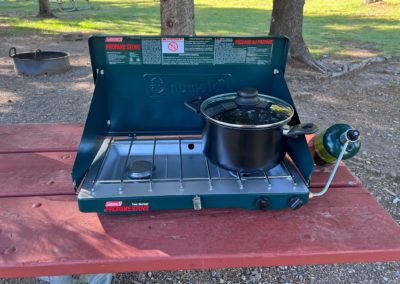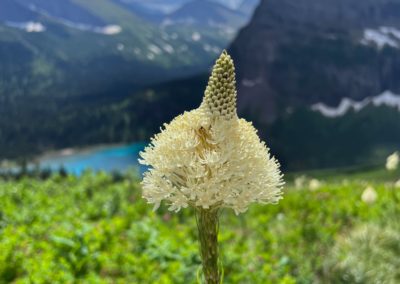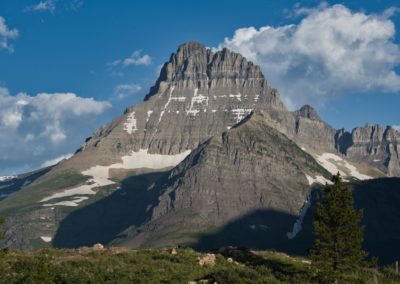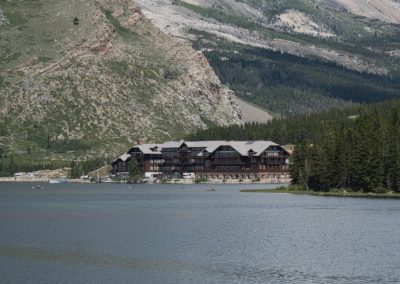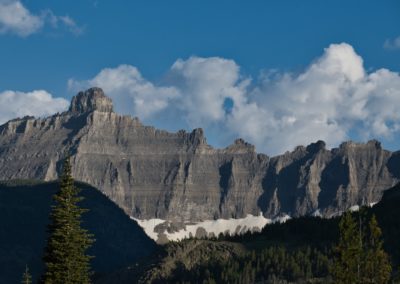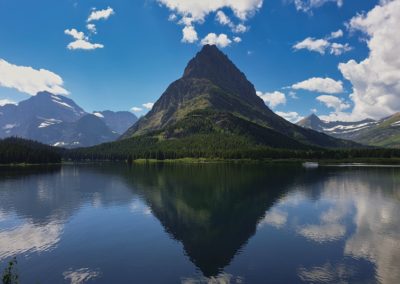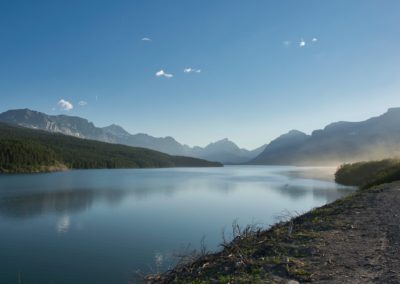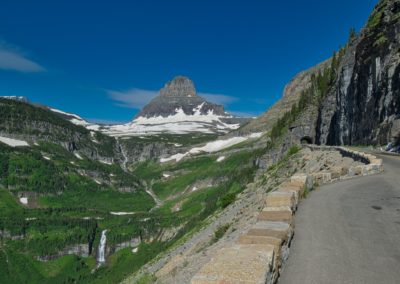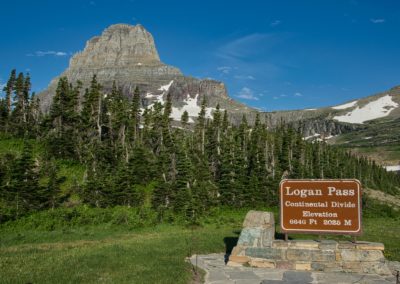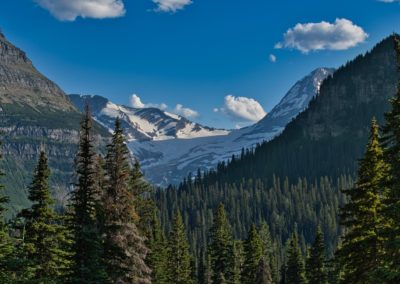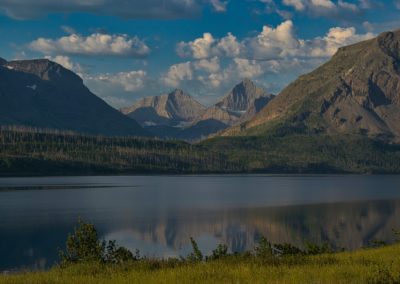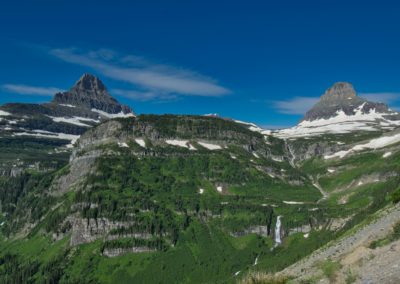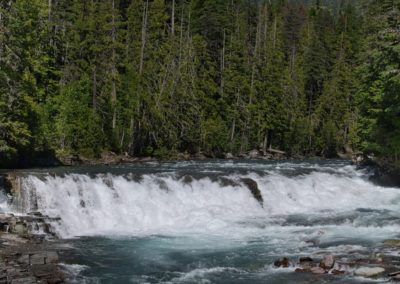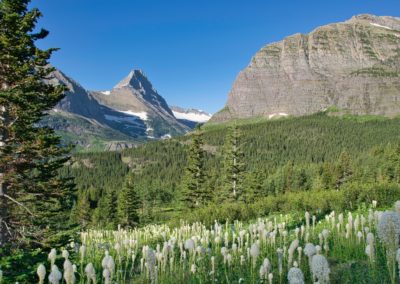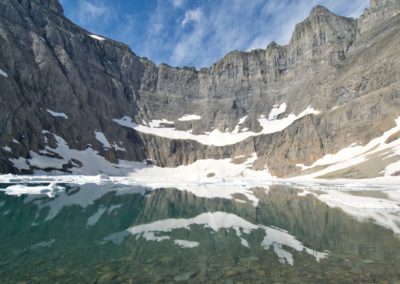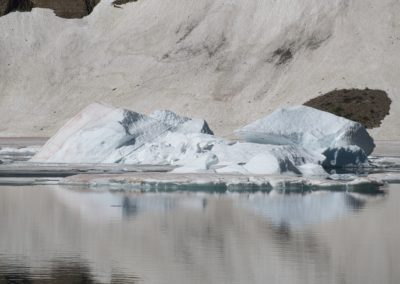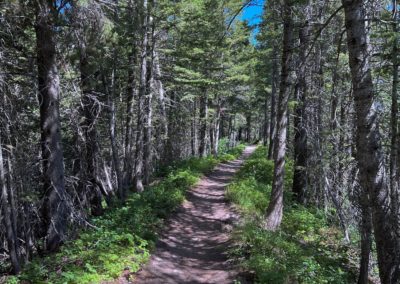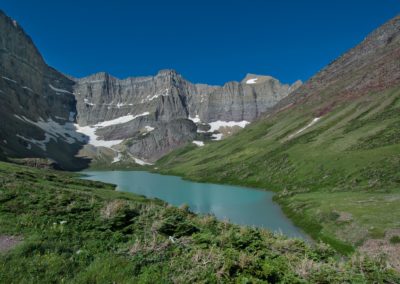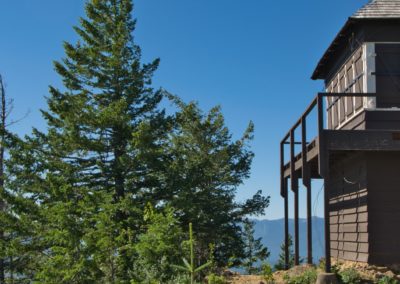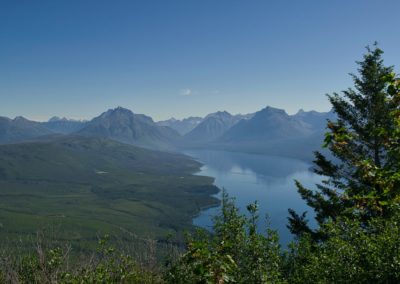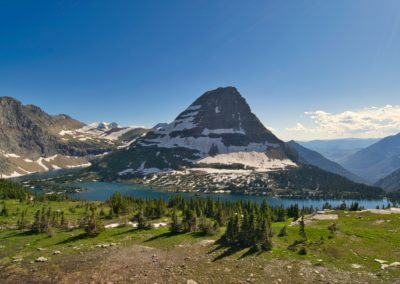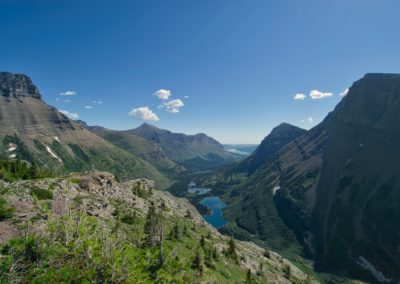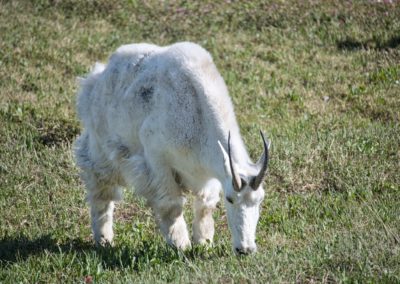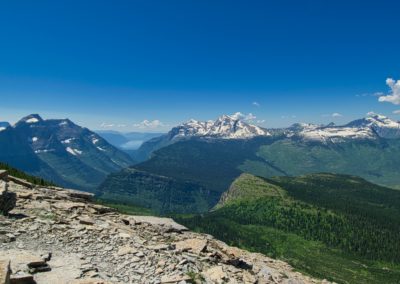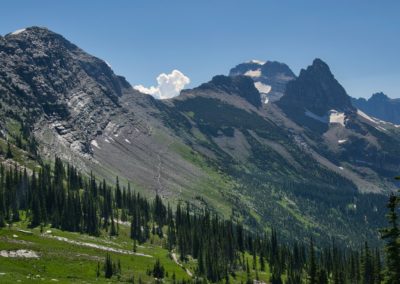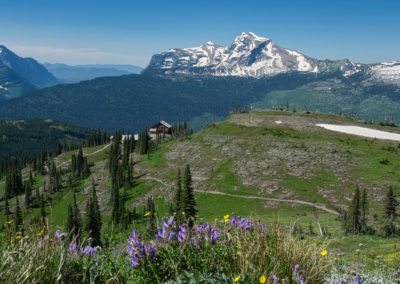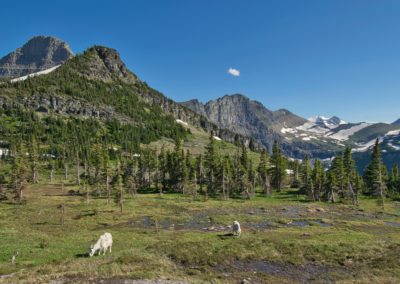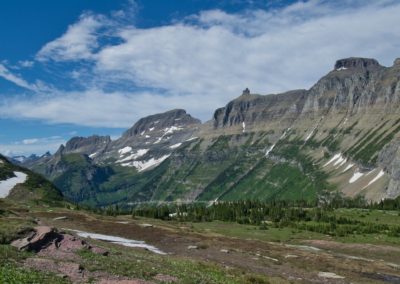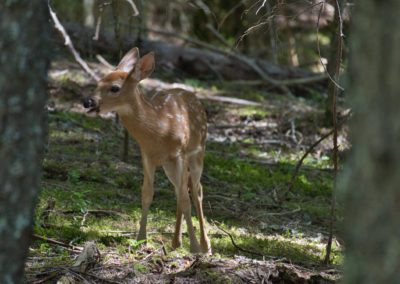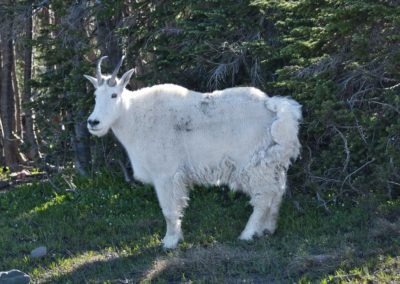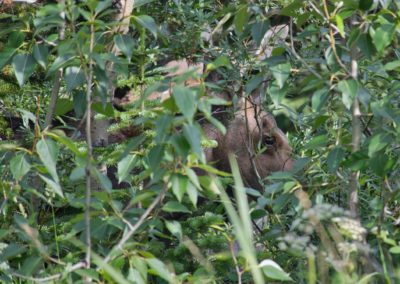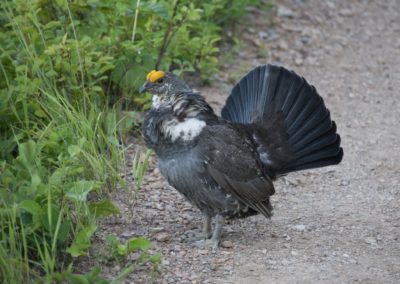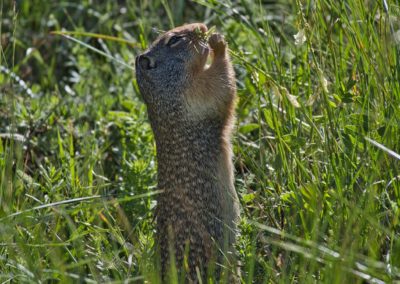GLACIER National PARK
Glacier National Park
After Rocky Mountain and Grand Teton National Parks, Glacier National Park is our third stop in the American Rocky Mountains. Located on the border with Canada, we had already planned to go there during our trip to Canada back in 2018. The weather conditions however had prevented us from doing so. We are now making up for it and are spoiled by two weeks of perfect weather.
Preparation for Glacier National Park
From Wyoming we drive about 600 kilometers north through the state of Montana to get to the national park. On our way, we stop at the Walmart in Helena to stock up on food and useful equipment. We had already bought a cooler and dishes at the beginning of our trip, so we are now adding a gas stove with two hot plates, some pans, as well as camping chairs and other useful utensils to our equipment. After spending over three hours in the huge Walmart, no wonder we are craving for fast food afterwards, so we bite hungrily into the delicious “Impossible-Burgers” from Burger King.
Glacier National Park
Glacier National Park is located on the Canadian border. With over 1100 kilometers of hiking trails, it is a true paradise for outdoor enthusiasts. With many lakes and a rich flora and fauna, this mountainous landscape is beautiful. The east and west sides of the park are connected by the famous Going-to-the-Sun-Road. This year, the road could not be fully opened until mid-July due to heavy snowfall. The consequences of climate change are particularly visible in Glacier National Park. Forest fires are increasing and glaciers are receding. When the park was established in 1910, there were more than 100 glaciers, now there are only 26. The remaining glaciers are also losing a lot of their surface area, the average retreat between 1966 and 2015 was 40%.
We consider ourselves lucky to be able to spend our two weeks in accommodations located directly in the park. This is not given: all of them were fully booked months in advance. We have been monitoring the park’s accommodation booking system daily for months and have little by little secured the nights freed up by booking cancellations. We stay in lovely rustic wooden cabins and historic motor inns and enjoy the genuine national park’s experience in the wilderness.
To recover from the strenuous hikes, we occasionally go to the lobby of the picturesque Many Glacier Hotel, a rustic Swiss-style Chalet-Hotel. This means here that the sign “Interlaken Lounge” bears the flags of the cantons of Uri and St. Gallen and that the employees are dressed in Bavarian costumes.
The park’s website offers more information on the history, organization, hikes and activities of the park.
Our highlights
National park experience
Beautiful hikes
Going-to-the-Sun Road
Apgar Village & Lake McDonald
Lovely Lake McDonald Lodge
Many Glacier area
Picnic areas
Going-to-the-Sun Road
The westside and eastside of the park are connected by the spectacular Going-to-the-Sun Road. The road is 80 kilometers long and reaches its highest point at Logan Pass, at an altitude just over 2000 meters. Driving this road is a real pleasure. It passes through dense forests and along beautiful lakes. Around Logan Pass, we make our way along rocks and precipices on a winding and narrow road while avoiding oncoming traffic. We pass the 30-meter long Weeping Wall from which several waterfalls flow directly onto the road. With pouring water falling, this section of the road turns into a natural car wash tunnel that gives our Chevrolet a new shine.
Our highlights
Splendid mountain road
Landscape along the road
Weeping Wall
Logan Pass
Numerous waterfalls
Hiking in the Many Glacier area
Except for the day of our arrival, we enjoy almost exclusively sunny weather for two weeks. We are therefore often on the hiking trails. However, we have to adapt our plans regularly. Some trails are still covered with snow, especially at the beginning of our stay, others are temporarily closed due to the presence of bears in the area.
We first spend some time in the northeast of the park in the Many Glacier area. We start with one of the park’s most famous hikes: Iceberg Lake. This lake does not bear its name by chance: even in summer, blocks of ice of varying sizes float on its surface. The next hike leads us to Cracker Lake, a hike of a little more than 20 kilometers. We also take the trail to Grinnell Glacier, which is probably the most famous hike in the park. Al Gore, back then vice-president of the United States and future presidential candidate, hiked this trail in 1997 in order to draw the attention on the consequences of the climate change with as example the retreat of the glaciers. At the time of our visit, the last two kilometers of the trail were unfortunately closed because of the risk of avalanche. Just having a view on Grinnell Lake was however worth the effort.
Our highlights
Iceberg Lake
Grinnell Lake
Grinnell Glacier Trail
Hikes along Going-to-the-Sun Road
We also took some hike along the Going-to-the-Sun Road. It is often necessary to get up pretty early to secure one of the limited parking spots at the trailheads.
The short climb along the still mostly snow-covered trail to Hidden Lake Overlook was particularly entertaining. This short hike begins at Logan Pass and offers a breathtaking view of the surrounding mountainous landscape and Hidden Lake. As many bears have temporarily taken up residence at the lake and chosen this area as their favorite food source, we weren’t allowed to go all the way to the lake. The view from the overlook is absolutely gorgeous.
We also hike up to Apgar Fire Lookout, an old observation tower designed to detect forest fires. This hike offers beautiful views of Lake McDonald and the surrounding area. To finish off the trip, we create a custom hike by combining sections of several hikes: Granite Park Chalet, Swiftcurrent Pass, part of the Highline Trail and finally Grinnell Glacier Overlook are part of a challenging but unforgettable of a more than 8h excursion.
Our highlights
Swiftcurrent Pass
Grinnell Glacier Overlook
Hidden Lake Trail
Hidden Lake Overlook
Apgar Fire Lookout
Wildlife
As in Rocky Mountain and Grand Teton National Parks, we also encounter a variety of wildlife here. Various species of squirrels, chipmunks and marmots are present on every hike. We also see several mule deer with their young. In addition to a bighorn sheep and moose, we also see several times the emblem of the park, the mountain goat. Despite several evening explorative drives, we did not see any grizzly bears.
Our most beautiful hikes in detail




